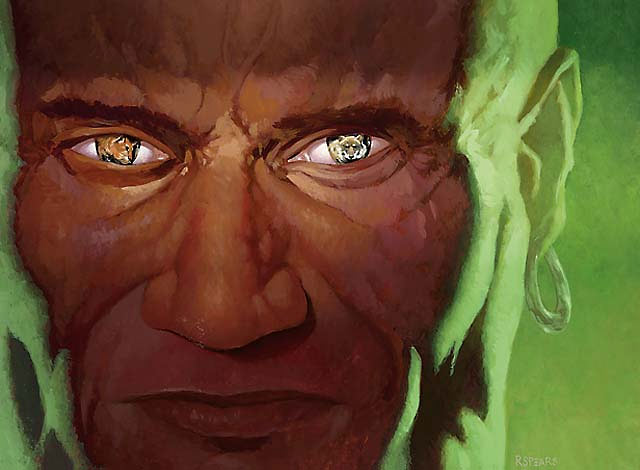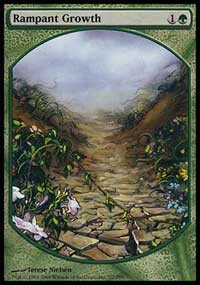Are you a Quiet Speculation member?
If not, now is a perfect time to join up! Our powerful tools, breaking-news analysis, and exclusive Discord channel will make sure you stay up to date and ahead of the curve.
Welcome back, readers!
Today I wanted to cover a collection of topics that aren't large enough to merit their own article. Each is related nominally to "alternate" things in the Magic finance world. Curious? Read on.
Alternate Currencies
For those who are unaware of PucaTrade, it's was a huge deal about three years ago. The website allows people to trade cards to other members of the site for their proprietary currency, "puca points."
These points were equivalent to about 1 cent (or 0.01 US dollars) with regards to how cards were priced on the site. Membership in the site exploded when it originally released. It served as a fantastic way for players to move cards "at full value" in trades, and provided an out both for casual players to unload competitive cards, and for competitive players to unload casual cards.
Back in December of 2014 I wrote an article covering the basics. That article also mentioned a major concern I had at the time:
"Also, by using a 'new' type of currency there is always the potential risk, especially one that in theory can be created by the site owners. However, doing this on any sort of mass scale would cause people to quickly lose faith in the system (as we’ve seen occur throughout history when governments just start printing money to pay off debts it leads to hyper-inflation and usually the collapse of said currency)."
Unfortunately, this did happen partially, though not in an insidious way. Every new account had ways to get 500 extra points (or about $5) for free, simply by doing things like adding an avatar and adding cards to a want list. Each time a new account was created, the true value of the puca point deflated just a little bit.
In this way they were victims of their own success—lots of new accounts meant lots of deflation. There was a time when the value of the puca point was actually around 0.007-0.008 cents (US), which meant that you could basically "sell" your cards for around 70-80% of TCG Mid. This was way higher than most buylists, and especially good for lower-priced commons and uncommons. (I distinctly remember getting almost 300 points for numerous Gitaxian Probes).
The second major issue that occurred was when the site went down for a major overhaul. The owners decided to "upgrade" the site visually and add a bunch of additional features, but in doing so the site was down for over a week. People (like myself) began annoyed, and quickly became concerned, when they no longer had access to their puca money, much in the same way as people right after the Wall Street Crash of 1929 ran to the banks trying to pull out their lifesavings. We see a similar issue today in Venezuela, where their currency (the Bolivar) has plummeted in value thanks to rampant inflation.
The important lesson here is that a currency's value is tied heavily to consumer confidence. I bring this up because it appears that new sites are popping up with a somewhat similar concept (for example Cardsphere). I wouldn't be surprised to see this trend continue, though hopefully these new sites learn their lessons from PucaTrade. From a consumer standpoint, I would be wary of any sites that offer "free points" for doing simple/easy tasks, as well as any that don't have a system in place to curb inflation (likely in some form of transaction cost that removes points from the system slowly).
Alternate Stores
This is the time of year when many players go on vacation (at least here in the northern hemisphere, as it's summertime). Traveling to new places means seeing new game stores, assuming you're allowed time to get away.
I love looking for game stores while on vacation. Metagames can often vary even within one's own geographic region, and cards that may not move at your local game store might be in high demand at a game store a couple hundred miles away. I suggest you always do a bit of background research on the Magic environment where you're going, and try to make sure to swing by the stores. I've found numerous hidden gems while on vacation by doing just this.
My favorite thing to look for is stores that have a box or bin with a flat price for everything (like everything in this box is $0.25). This gives me a nice challenge to see if I can find anything worth more than the posted price. This also lets me purchase spec targets without worrying about the cards being repriced at the time of purchase. (If the store owner does this, then I would definitely write a review on Facebook as they would have just outsourced sorting to you at no cost to them).
There are also opportunities to find stores that no longer sell Magic cards and have "leftovers" sitting around. This week I just got back from a vacation where this exact thing happen. I went to a store that used to do Magic, but no longer does, and the owner had about 10k worth of cards sitting in boxes on a table (and some in binders).
I asked about pricing and was told that he went by TCGPlayer for rares, and that we'd just figure out a fair price on commons/uncommons. So I started digging in and found a lot of good uncommons/commons that were buylistable. When I took him my pile (of about 400 cards) he looked it over, gave me a very reasonable price, and I was on my way.
Another thing to check is the big-box stores in the area. Sometimes they will have the latest Commander decks and there's always a chance they might have one of the valuable ones (like Atraxa). I didn't find that this time, but I've had luck in the past.
Alternate Formats
We've seen several alternate formats come and go, like Tiny Leaders and Frontier. These often grow quickly and then sputter out, but they can sometimes generate opportunities.
Today I'd like to discuss the one-v-one Commander format. On July 5th the MTGO Blog announced some changes to the 1v1 Commander Banned and Restricted List. The reason I bring this up is because with WoTC's online support of the format, it is inevitably going to bleed back into the paper world. After all, when people enjoy something they often want to share it.
Before this, there was already a 1v1 Commander format called Duel Commander (or French Commander). What's interesting is that there is a schism in the banned and restricted lists between the two. This will obviously cause confusion and likely some upset players, should any TO try to hold events in this format. In the end I expect we'll see a convergence on the banned and restricted lists and we will likely have one list to rule them all.
That being said, there is definitely some financial opportunities if one assumes that 1) the format will grow in popularity; and 2) that the WoTC B&R list will reign supreme (as they control the MTGO option and most people look to them for B&R lists it seems highly likely that they will).
On the WoTC MTGO Blog Announcement we saw four cards unbanned and five cards banned. The opportunity I feel is with the unbans as their previous price points were set at whatever the previous demand was willing to pay. Now we could see a shift in demand (I don't know how large, but I'm not guessing a ton) thanks to these unbannings.
Unfortunately, none of the unbanned cards are legal in regular Commander, so the demand increase is solely limited to people who want to play 1v1 Commander in paper.
That being said, you can pick up foil Biorhythm for under $1 (both Onslaught and 9th Edition versions, though I'd focus on the Onslaught ones). You can also purchase copies of Limited Resources for under $1 (and it has only the single printing in Exodus). This card is extremely powerful, especially if you can get lands into play faster than your opponent.
I wouldn't go hog-wild on either option, simply because both are too powerful for regular Commander to ever be unbanned, and I don't see 1v1 playerbase growth being explosive. But if I see any in trade binders, I'd have no problem going after them, especially at their current prices.
Alternate Arts
Within the past few months we have seen some significant growth in some of the Magic Player Rewards full-art cards. The latest (and largest) spike is with Rampant Growth, but we've also seen bumps in Angel of Condemnation and Disenchant.
As WoTC seems unlikely to revise this reward system and it's been gone for almost seven years now, it's not surprising that demand for many of these cards has grown. As the cards have no text on them it's difficult to foresee WoTC reprinting them (even in supplemental products) so they will likely continue to get rarer and grow in value. So if you come across any that haven't moved yet, they would likely be pretty safe long-term holds with good growth potential.
Conclusion
Hopefully you enjoyed today's mixed bag of topics. If you have any comments or suggestions, I look forward to reading them in the comments section below (or PM me on the forums).







